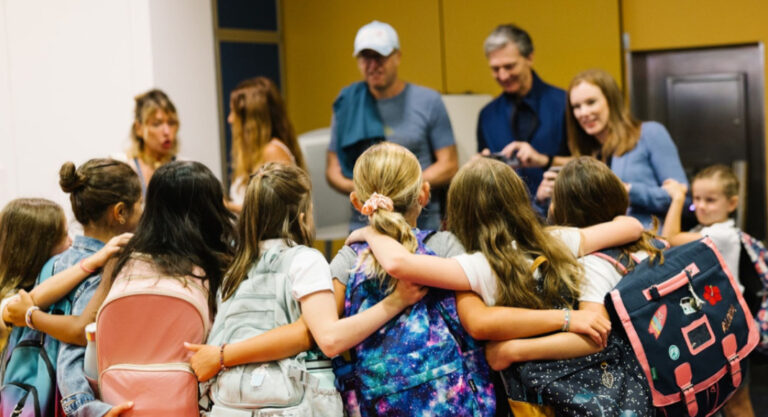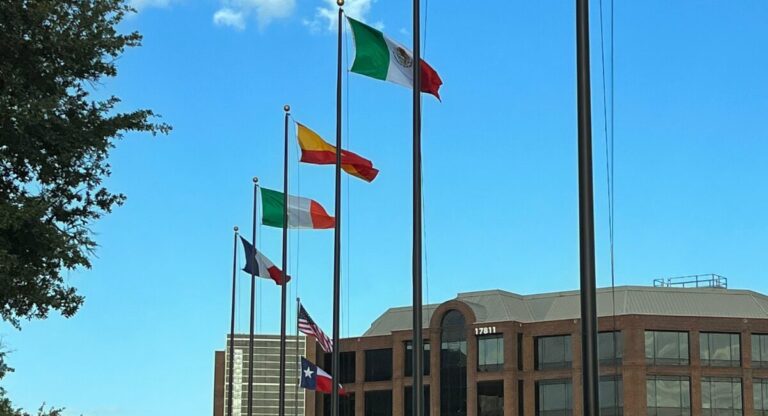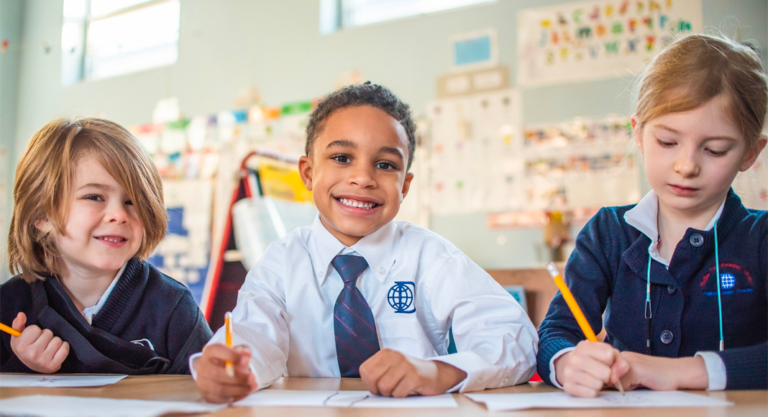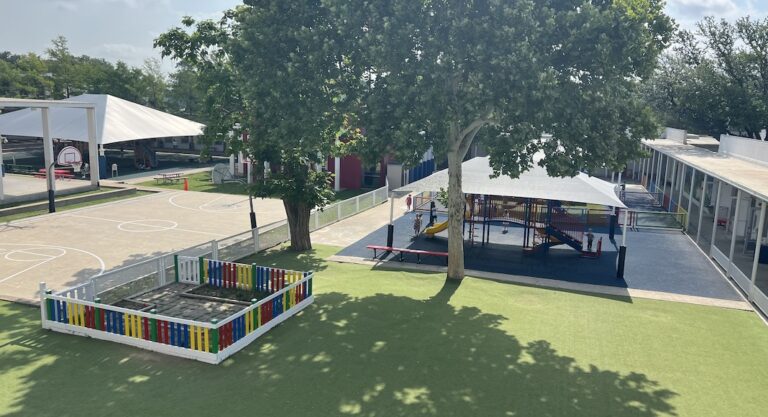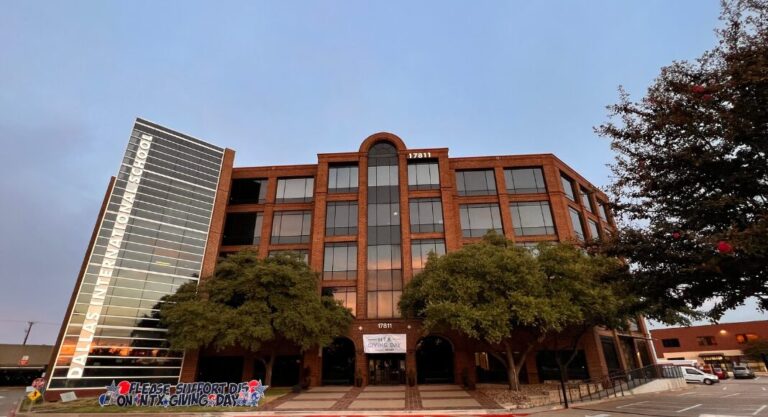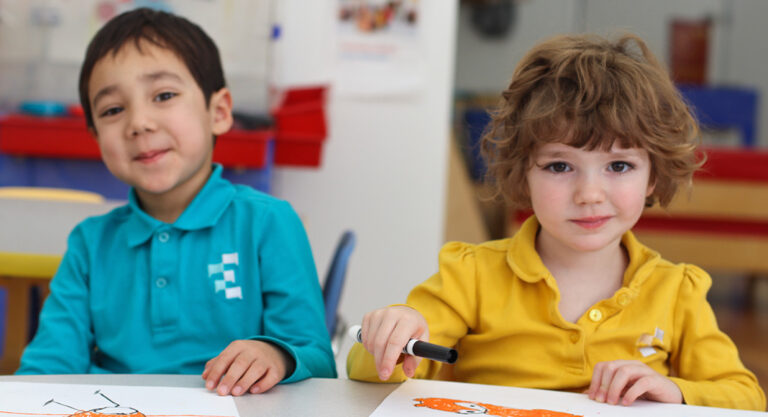(Sponsored article) Students at the Lycée Français de New York are just entering their first week of school, which, as in many schools, will be “hybrid”: both in person and online. And if the 200 or so teachers and 1,300 students are ready, it’s because this digital shift has been in the works for years in the bilingual school on the Upper East Side.
“In a way, we’re fortunate that COVID-19 is only arriving now,” notes Evelyne Estey, Head of school. “Without knowing it, we’ve been preparing for it for years and by March, when it was time to go fully digital over night, we were ready.” These years of preparation that the Evelyne Estey mentions reflect the school’s commitment, since 2013, to digital learning. “From that time on, we integrated into the school’s strategic plan the need to accelerate technological investments, recognizing that these tools were indispensable to the learning of tomorrow’s digital citizens.”
From student equipment (tablets for all) to the school’s infrastructure, and – above all – teacher training, the objective was to adapt teaching methods to an increasingly connected world. Adena Dershowitz, now head of the middle school, was in charge of digital learning during this time. “Once the equipment and infrastructure was in place, we started asking teachers to systematically use the online learning to enrich their lessons,” she says. “But we also piloted optional courses at the middle school level (economics, photography, physics), which were taught only online.”
This digital culture had already entered the daily lives of students and their teachers. And when, at the end of January, Lycée officials began to develop an emergency plan for an “online Lycée” in anticipation of a possible closure, “it was created and implemented without drama.”
Lessons of a Pandemic
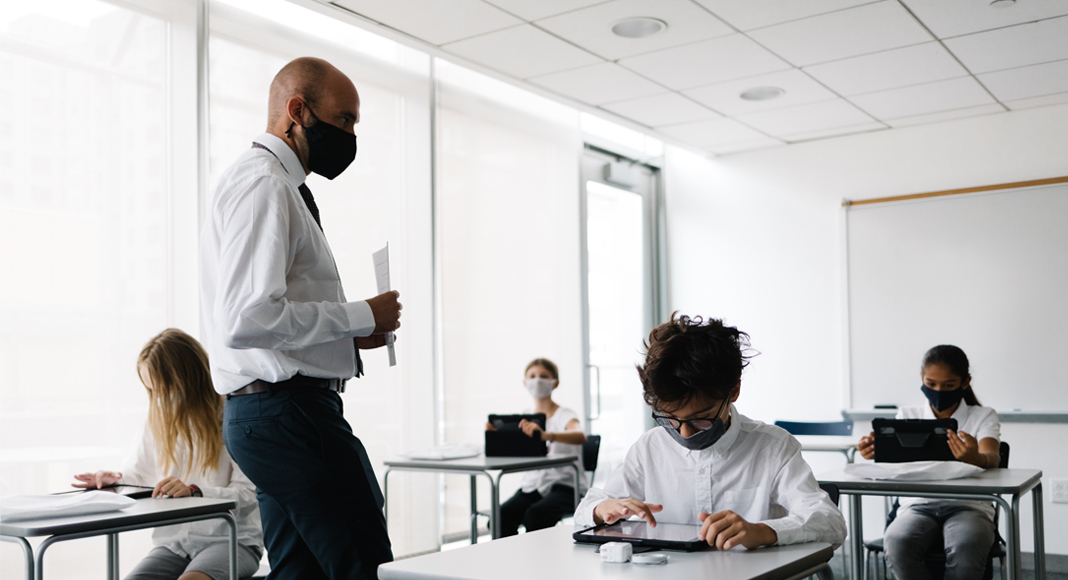
But if the three months or so of forced online schooling, from March to June, validated the Lycée’s digital strategy, they were also rich in lessons. The first of these, paradoxically, was the importance of physical presence. “There is no doubt that there is a ‘Zoom fatigue’,” says Estey. An hour in front of the computer can be long, especially for younger people. “We need to establish variety during the day, diversify our teaching methods, something which our teachers are now very sensitive to, and respond by innovating in fantastic ways.” At the same time, “the importance of the community really became apparent during these three months,” adds Dershowitz. “The students need each other, and need to see their teachers.” In short, “face-to-face” teaching remains at the heart of the school, especially for the younger students. These lessons were used to build the plan for the new school year. “From the beginning of May, we started working on the start of the September school year with a hybrid model,” explains the head of school. This allowed us to present it to the parents, get their opinion and put in place – as far as possible – the model that was the most adapted to the needs of the children and families.”
All students will divide their time between in-person instruction at the Lycée, and online instruction, in proportions that vary according to age and pedagogical needs. In elementary school, the students have been divided into “pods” of 11 to 13 students, which allow them to respect the sanitary standards inside the classrooms, especially the 6 foot gap between students. Students in 1st and 2nd grade, who learn to read and write in French and English, come to the Lycée full-time; their elders in 3rd through 5th grade spend half their day at the school and half their day online. At the upper level, the proportion of in-person instruction decreases (4 half-days per 7-day cycle at the middle school level and 3 half-days at the high school level).
Like all schools in the country, the Lycée looks forward to the day when all students can return to school at the same time. But it’s not likely that things will return precisely to “as they were before.” “Our teachers are innovators, and all this will have given them ideas that they can integrate in a sustainable way,” says Estey. “We now know that while in-person instruction is irreplaceable, there are also some things we do better online – or at a distance.” This forced and accelerated experience of digitizing the school “will leave a lasting mark on the way we teach.”
Learn more about Le Lycée Français de New York.
—————-
Sponsored articles do not belong to the editorial team at Frenchly. They are provided or written at the request of the advertiser, who determines the content.



